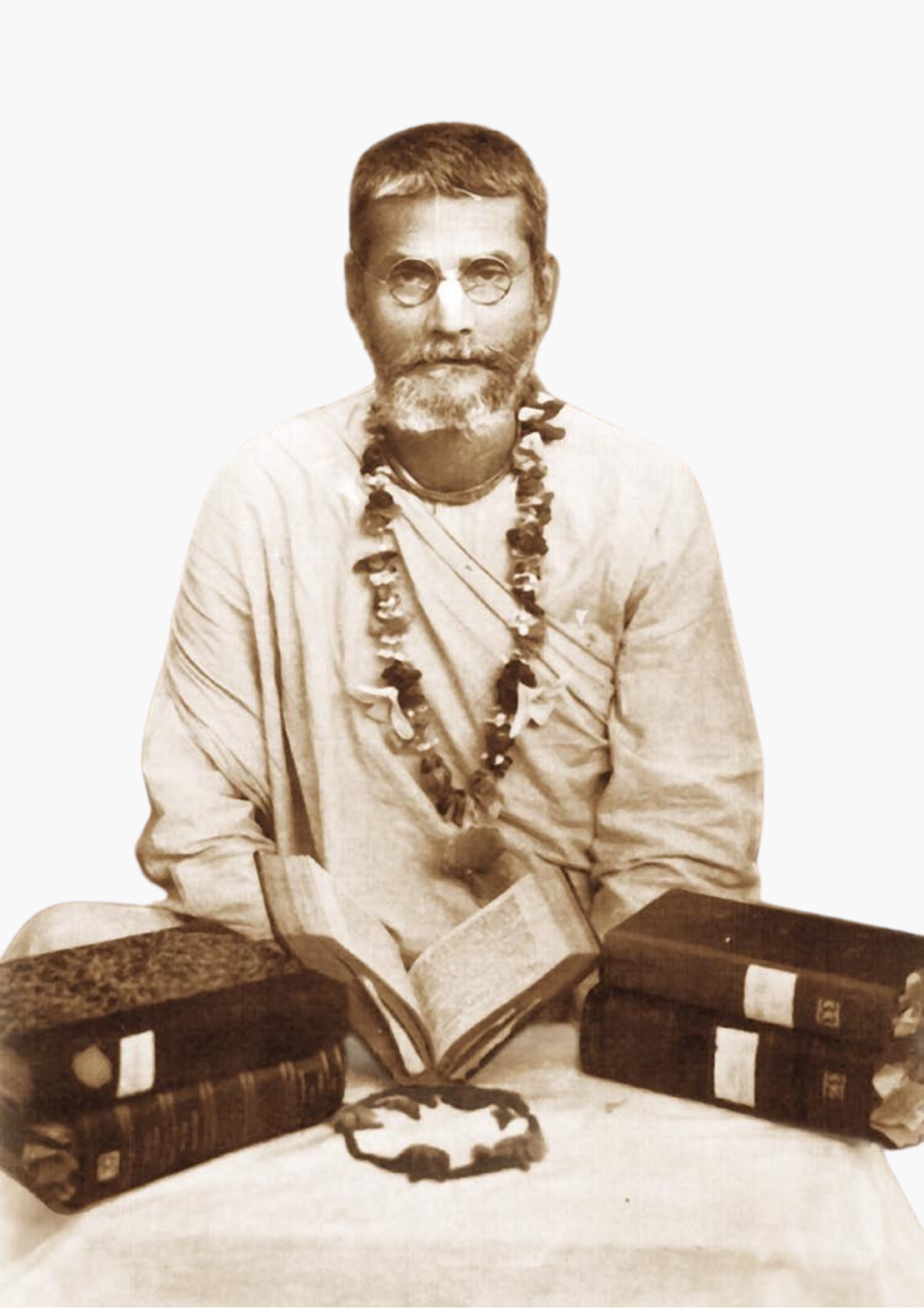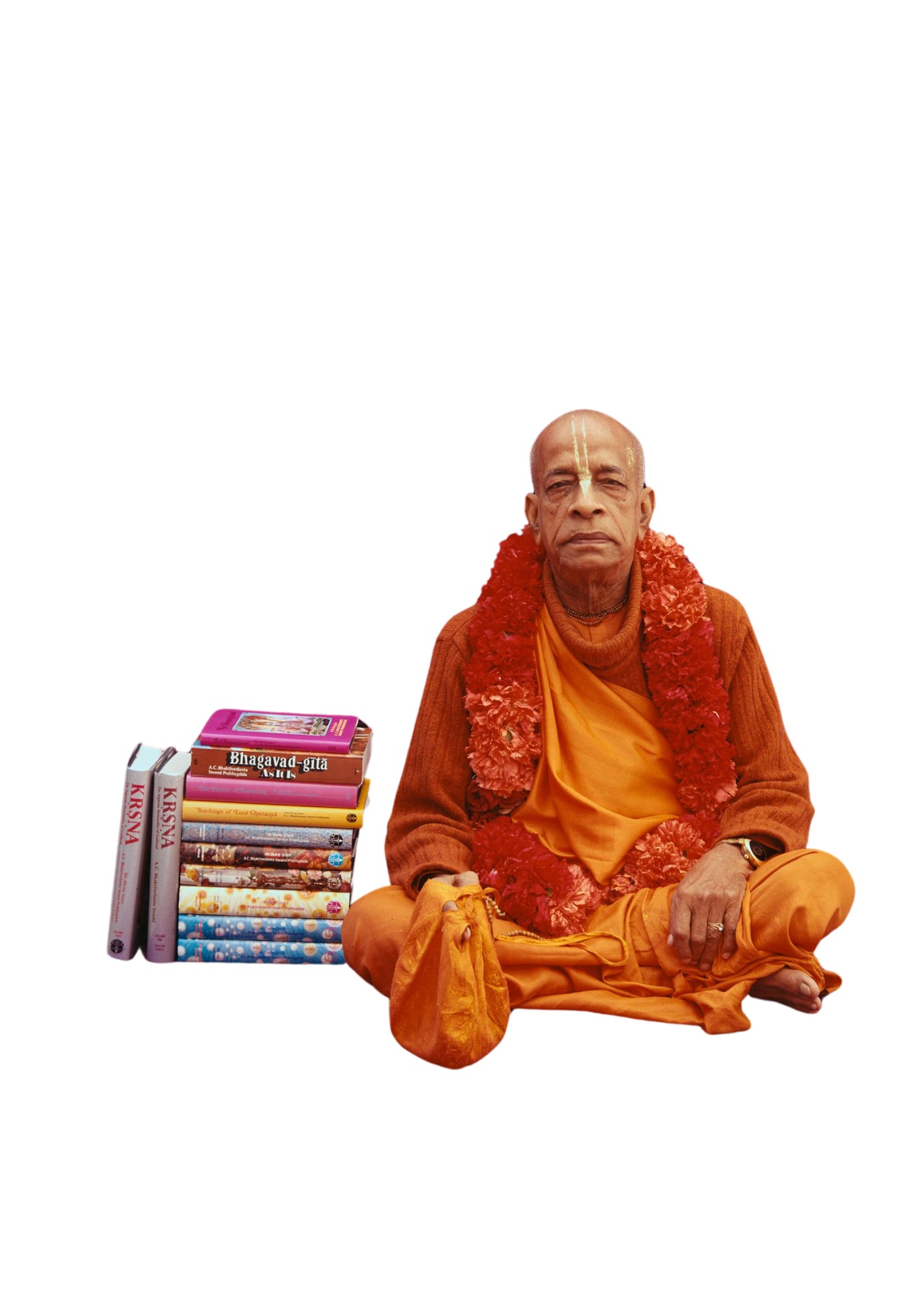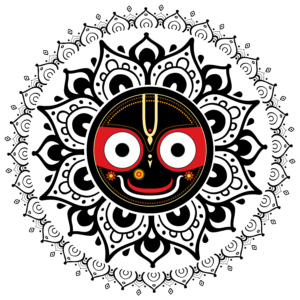(House of Bhakti) – Transcendental Whistleblower
The following is an excerpt from the book Our Śrīla Prabhupāda – A Friend to All by Mūla-Prakṛti dāsī, published in 2004 soon after her passing away* in Vṛndāvana
“After the Gauḍīya Maṭha institution had broken apart, my gurudeva, together with Abhaya Caraṇāravinda  Prabhu and Narottamānanda Brahmacārī [later Śrīla Bhakti Kamala Madhusūdana Mahārāja] filed the papers to establish the Gauḍīya Vedānta Samiti. This was done on April 7th, 1940, in a rented house at 33/2 Bosapada Lane, Calcutta. Although they separated from the political upheaval happening within their guru mahārāja’s institution, they did not give up Śrīla Bhaktisiddhānta Sarasvatī Prabhupāda or his mission and siddhānta. They wanted to re-establish his bona fide ideas and instructions, but they did not want to give up his concept of the Gauḍīya Maṭha. Therefore the names of the maṭhas established by the Gauḍīya Vedānta Samiti were Devānanda Gauḍīya Maṭha, Uddharaṇa Gauḍīya Maṭha, Keśavajī Gauḍīya Maṭha, and many others. “My introduction to Abhaya Caraṇāravinda Prabhu came in 1947 when I was in Calcutta as the personal servant to my gurudeva. One day, a new branch of the Gauḍīya Vedānta Samiti was inaugurated. It was a large assembly, and many Vaiṣṇavas were present there. During the lecture given by my gurudeva, a gṛhastha devotee came in through the back door. Upon seeing him, Gurudeva stopped speaking and asked me to bring him forward. That devotee humbly hesitated to come forward, but my gurudeva ordered that he come to the front. Gurudeva gave so much respect to him and insisted he sit next to him on the platform. I looked up at Gurujī, silently questioning, ‘Who is this devotee?’ It was rare that he would single out a devotee and honour him in this way. Afterwards, he told me, ‘This is Abhaya Caraṇāravinda Bābū, my dear godbrother. He is a very special disciple of Śrīla Bhaktisiddhānta Sarasvatī Prabhupāda. He is so humble and qualified. You should take note of him, hear carefully from him, and serve him.’
Prabhu and Narottamānanda Brahmacārī [later Śrīla Bhakti Kamala Madhusūdana Mahārāja] filed the papers to establish the Gauḍīya Vedānta Samiti. This was done on April 7th, 1940, in a rented house at 33/2 Bosapada Lane, Calcutta. Although they separated from the political upheaval happening within their guru mahārāja’s institution, they did not give up Śrīla Bhaktisiddhānta Sarasvatī Prabhupāda or his mission and siddhānta. They wanted to re-establish his bona fide ideas and instructions, but they did not want to give up his concept of the Gauḍīya Maṭha. Therefore the names of the maṭhas established by the Gauḍīya Vedānta Samiti were Devānanda Gauḍīya Maṭha, Uddharaṇa Gauḍīya Maṭha, Keśavajī Gauḍīya Maṭha, and many others. “My introduction to Abhaya Caraṇāravinda Prabhu came in 1947 when I was in Calcutta as the personal servant to my gurudeva. One day, a new branch of the Gauḍīya Vedānta Samiti was inaugurated. It was a large assembly, and many Vaiṣṇavas were present there. During the lecture given by my gurudeva, a gṛhastha devotee came in through the back door. Upon seeing him, Gurudeva stopped speaking and asked me to bring him forward. That devotee humbly hesitated to come forward, but my gurudeva ordered that he come to the front. Gurudeva gave so much respect to him and insisted he sit next to him on the platform. I looked up at Gurujī, silently questioning, ‘Who is this devotee?’ It was rare that he would single out a devotee and honour him in this way. Afterwards, he told me, ‘This is Abhaya Caraṇāravinda Bābū, my dear godbrother. He is a very special disciple of Śrīla Bhaktisiddhānta Sarasvatī Prabhupāda. He is so humble and qualified. You should take note of him, hear carefully from him, and serve him.’
“In 1953, our magazines Gauḍīya-patrikā and Bhāgavata-patrikā were started. Our gurudeva requested Abhaya Caraṇāravinda Prabhu, ‘I want to establish publications in Bengali and other languages. I especially want you to write articles for that.’ Earlier, Prabhu had written articles for The Harmonist, and now he continued to write many wonderful essays, Gītā purports, etc. He wrote so marvellously, and everyone praised him. He challenged all who opposed pure bhakti, especially the ‘Mūrgī Mission’ (‘Chicken Mission’). He called the Ramakrishna Mission the ‘Mūrgī Mission’ because the members ate mūrgī (chicken). They took flesh, eggs and many abominable things. Vivekānanda and his Ramakrishna Mission were very prominent in those days. They were renowned by the public, who said, ‘Oh, these are such high-class devotees. In India, only they follow the Vedānta, and others do not. The Gauḍīya Mission and others are not Vedāntic.’ Abhaya Caraṇāravinda Prabhu wrote a two-part article about the mūrgīs that astonished and convinced many people. It was like a drama; everyone requested him to write more articles like these, which called for reforming religious institutions and saṁskāras.
“Later, Abhaya Caraṇāravinda Prabhu wrote another dramatic article – this time about some of the leaders in  the Gauḍīya Maṭha. The article explained how the institution was coming apart after Śrīla Prabhupāda’s departure. Gṛhasthas were giving up their wives and loving others’ wives, and in the name of developing the mission, some were putting all the money collected into their own pockets. Sannyāsīs, even those who had been with their Prabhupāda, made buildings and sent all the money to their sons in their former homes to attend high school and university or go to England and America to study law and [some] other things. He wrote about this situation, and the first part was published in our Bhāgavata-patrikā and Gauḍīya-patrikā. At once, a big storm broke out in the whole Gauḍīya Mission. Although only about three pages were printed, letters began to come from many Gauḍīya Maṭhas.
the Gauḍīya Maṭha. The article explained how the institution was coming apart after Śrīla Prabhupāda’s departure. Gṛhasthas were giving up their wives and loving others’ wives, and in the name of developing the mission, some were putting all the money collected into their own pockets. Sannyāsīs, even those who had been with their Prabhupāda, made buildings and sent all the money to their sons in their former homes to attend high school and university or go to England and America to study law and [some] other things. He wrote about this situation, and the first part was published in our Bhāgavata-patrikā and Gauḍīya-patrikā. At once, a big storm broke out in the whole Gauḍīya Mission. Although only about three pages were printed, letters began to come from many Gauḍīya Maṭhas.
“It was like a revolution. Our guru mahārāja and Abhaya Caraṇāravinda Prabhu were talking and smiling very secretly together. Prabhu said, ‘We should publish more of it. Why not?’ Guru Mahārāja was also in favour of publishing it. However, many godbrothers exclaimed, ‘Oh, Keśava Mahārāja, what are you doing, [why are you] printing this? Then everyone will know and will criticize the Gauḍīya Maṭha. These are our private family matters.’ Even pūjyapāda Śrīla Śrīdhara Mahārāja, who was highly respected by all, was consulted. Many godbrothers came to Mathurā at that time, and Abhaya Caraṇāravinda Prabhu was residing here in our maṭha. Śrīla Tīrtha Mahārāja and other devotees asked, ‘What are you going to do? If you print this, then our present institution will be smashed.’ Guru Mahārāja and Abhaya Caraṇāravinda Prabhu were smiling and asking each other, ‘Oh, what to do?’ But when requested by so many godbrothers, they decided, ‘Later on, we may publish the articles, but for now, we should obey their orders.’
*Passing Away of Mūlaprakṛti Dāsī
On Ekādaśī, 12 July 2004, at 8:26 a.m., our dear Godsister and friend Mūlaprakṛti dāsī gloriously departed from this world. In September 2003, she was diagnosed with cancer and, after a courageous battle with the  disease, returned to Vṛndāvana to spend her final days.
disease, returned to Vṛndāvana to spend her final days.
Those of you who knew Mūlaprakṛti will remember the intensity with which she lived her life. She had a burning desire to serve her spiritual master, Śrīla Bhaktivedānta Svāmī Prabhupāda, by preaching. She joined ISKCON in Los Angeles in 1973, and in the early years, shot to the top of the book distribution charts, distributing hundreds of thousands of books all over the United States and Japan and collecting millions of dollars for Śrīla Prabhupāda’s projects.
After Śrīla Prabhupāda’s departure, Mūlaprakṛti dāsī and her husband, Gopavṛndapāla Prabhu, initiated unique programmes to develop spiritual communities and foster loving relationships between devotees. Their two sons and daughters—Śravaṇa dāsa, Kīrtana dāsa, and Nityā dāsī — testify to the devotion and dedication with which they lived their lives.
In more recent years, Mūlaprakṛti dāsī’s abiding desire to act as a bridge between devotees blossomed as her horizon expanded to include the entire family of Gauḍīya Vaiṣṇavas. She began a book of interviews with people who knew Śrīla Prabhupāda before he went to the West (Our Śrīla Prabhupāda – A Friend to All). She became inspired by Śrīla Bhaktivedānta Nārāyaṇa Gosvāmī Mahārāja, who understood her great sincerity and encouraged her desire to glorify her Śrīla Prabhupāda.
Mūlaprakṛti dāsī took her bhajana very seriously, waking every morning at 3 a.m. to chant – gradually coming to one lākha – and worship her govardhana-śilā. Mūlaprakṛti also travelled widely and touched the lives of countless devotees with her sweet, loving exchanges, exemplary humility and yearning for devotees to realise their common bonds.
Śrīla Bhaktivedānta Nārāyaṇa Gosvāmī Mahārāja came to visit Mūlaprakṛti in her final days. She reached out to touch his lotus feet, and he said, “Don’t be afraid. Very soon, you will give up these old clothes, and beautiful, new ones will come, and you will be with all of Kṛṣṇa’s bhaktas in the kuñjas of Vṛndāvana. I know where you are going, and I’m not worried. You should leave very soon, without delay.”
Mūlaprakṛti said, “I am thinking of Śrīla Prabhupāda.”
“That is good,” Śrīla Mahārāja told her. “Śrīla Prabhupāda is with you. And I will help you also.”
Before she lost the strength to speak, Mūlaprakṛti dāsī assured us she was chanting in her mind. She sometimes confided that Śrīla Prabhupāda was blessing her with profound experiences. Her last audible words were “Hare Kṛṣṇa”.
In the end, Mūlaprakṛti dāsī lay under a beautiful portrait of Śrīla Prabhupāda, with Kṛṣṇa’s thick tulasī garland and Rādhārāṇī’s flower belt encircling her face, her beloved Deity, Girijiu, touching her forehead, and impressions of Śrīla Prabhupāda’s lotus feet behind her head. The holy names were written in gopī-candana tilaka on her body.
Hearing of Mūlaprakṛti’s passing, devotees stopped whatever they were doing and came from all over. After a tumultuous kīrtana, they performed her last rites on the bank of the Yamunā. We pay our heartfelt praṇāmas to this great Vaiṣṇavī, Mūlaprakṛti dāsī, who graced our lives with her friendship and love and taught guru-niṣṭhā by her life’s example (From an article by Śrīmatī Mañjarī dāsī, published in Rays of The Harmonist, No. 14, Kārttika, 2004).
Source: Purebhakti.com
Image(s) made possible by Pixabay.com, Krishnapath.org and/or Bhaktiart.net
Unless indicated differently, all verse translations and quotes are from the books by Śrīla Prabhupāda (Vedabase.com)
[ad_2]
#Transcendental #Whistleblower #House #Bhakti






